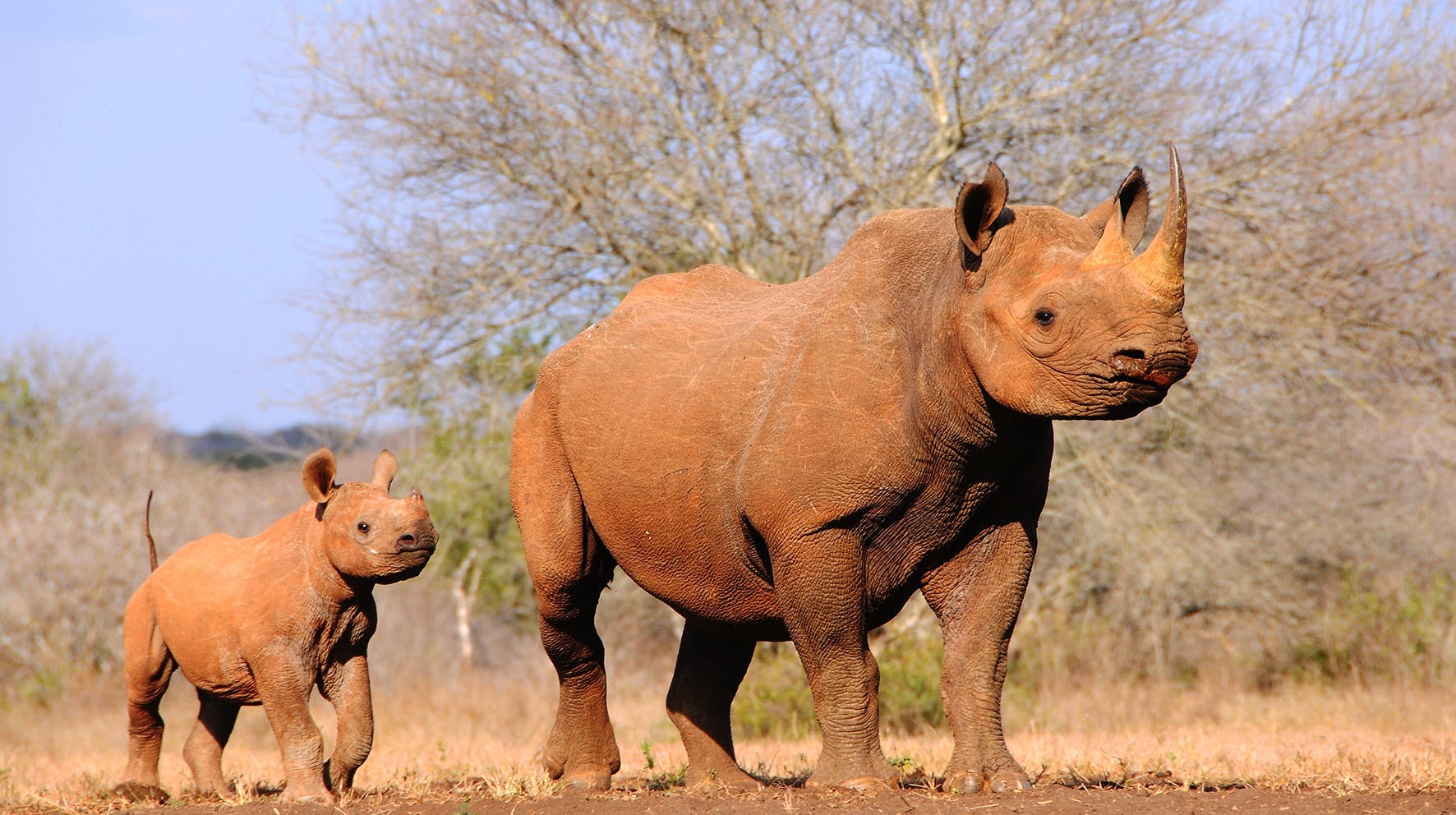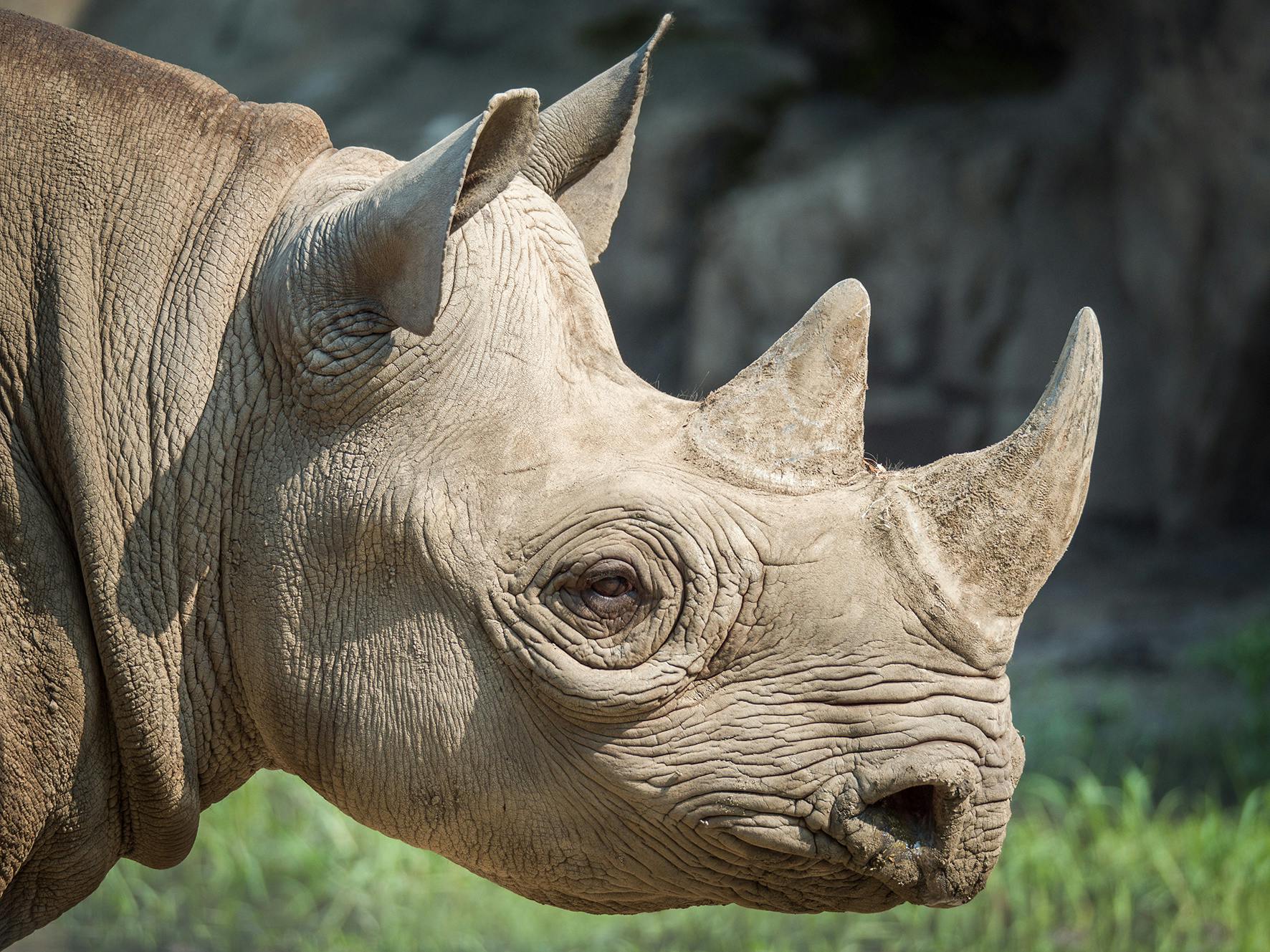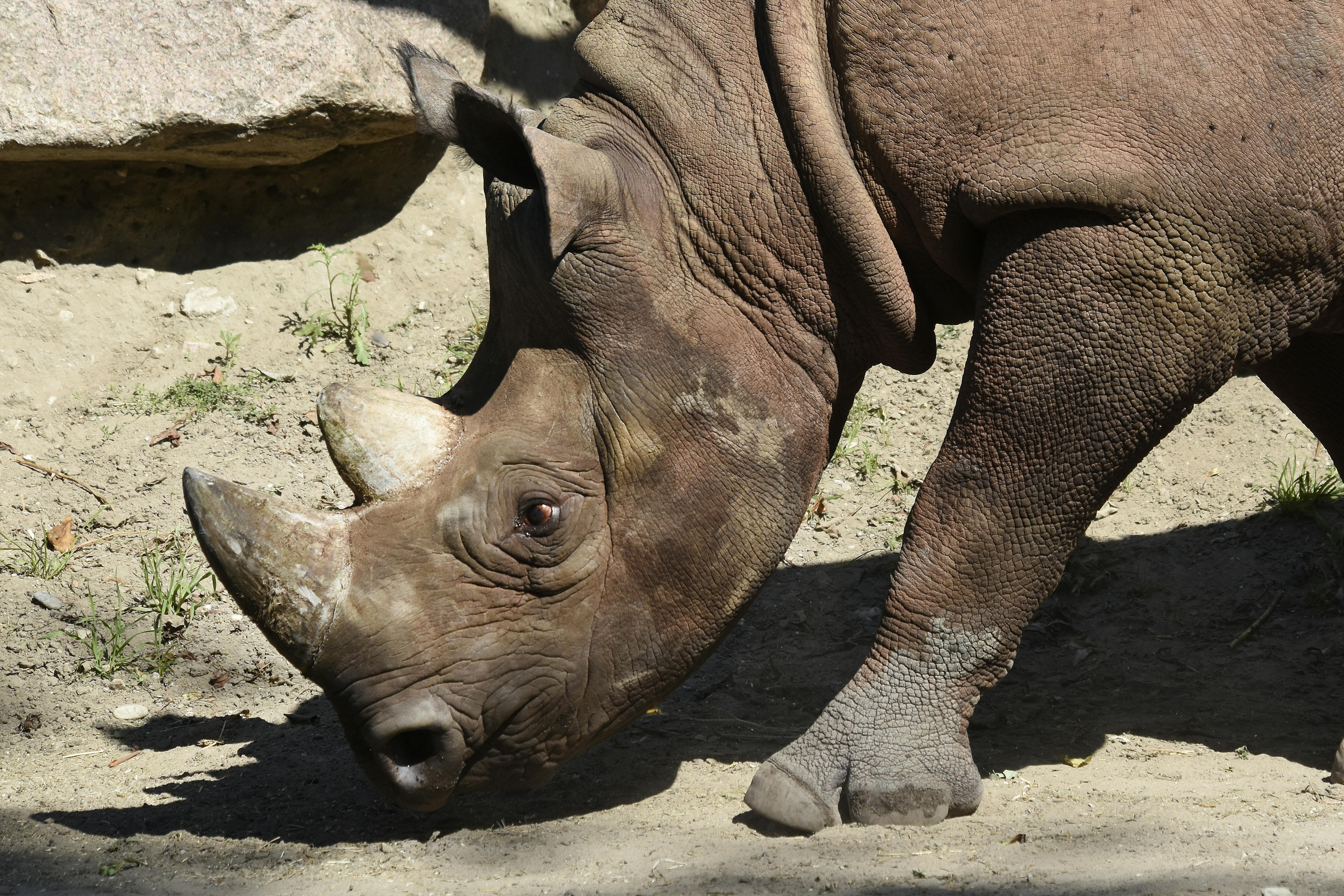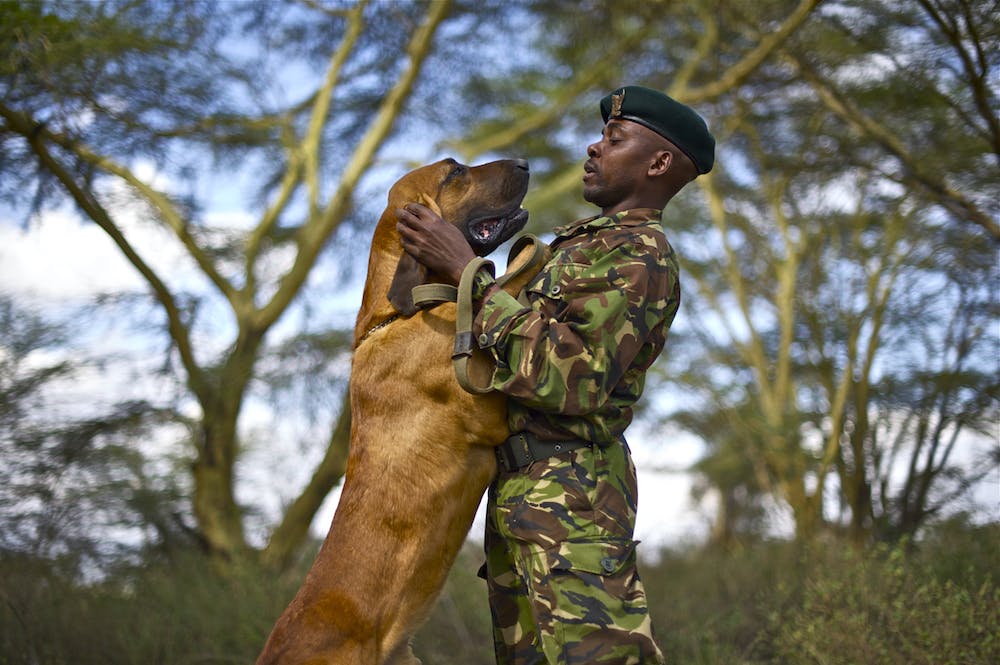Eastern black rhinoceros


The eastern black rhinoceros is one of Africa's largest animals. Its impressive horns and a top speed of up to 55 kilometers per hour keep most predators at bay. However, these horns are one of the main reasons that rhino numbers have declined sharply over the past century. That is why Rotterdam Zoo is helping to protect this critically endangered ungulate from extinction.

± 45 years
± 1.6 meters
2.9 - 3.75 meters
800 - 1300 kilograms
The eastern black rhino can be recognized by its two horns at the front of its head and its large, gray-brown body. They use their flexible, pointed upper lip to grab twigs and leaves to bite off. Like all other rhinos, they have three hooves on each of their legs, which are strong enough to run short distances.
The eastern black rhinoceros is found in Kenya and Tanzania. A population has also been released in Rwanda. In the past, this subspecies also occurred further north, as far north as the southern border of Egypt. Eastern black rhinoceroses live mostly on savannas and shrublands, with enough leafy plants to eat.

In many countries in Asia, the horns of rhinos are thought to have healing powers. But the horn is made of keratin, which our nails and hair are also made of. So it has no medical properties. Nevertheless, the horns bring in a lot of money through Asian markets. Therefore, in the guarded wildlife areas where the rhinos live, violent, well-organized poaching gangs are increasingly coming to shoot rhinos and take the horns. Protection of these areas is essential to preserve the black rhino.

To protect eastern black rhinoceroses in the wild, Rotterdam Zoo supports the Save The Rhino Foundation. This organization is dedicated to the global conservation of rhinos and their habitat. One of their initiatives is the Rhino Dog Squad in Kenya, a specially trained dog team to track down poachers and illegal goods such as horns. With these tracking dogs, not only the rhinos, but also local people are better protected from crime. Thanks to this dog team, the number of poached rhinos has decreased significantly.

To help ensure the survival of the eastern black rhinoceros, Rotterdam Zoo contributes to the European population management program. But breeding rhinos for a reserve population also has challenges. Black rhinos, for example, often suffer from excessively high blood iron levels, which can cause damage to reproductive organs. That is why Rotterdam Zoo is working with universities and other zoos to find the cause of this problem.
The eastern black rhinos at Rotterdam Zoo each have their own enclosure because they spend most of their time alone. Here they each have a shelter and a food cage, which the keepers use to feed the rhinos branches and rose leaves. Because black rhinos are quite skittish animals, their indoor enclosure is not open to visitors. This gives them a safe place to rest.